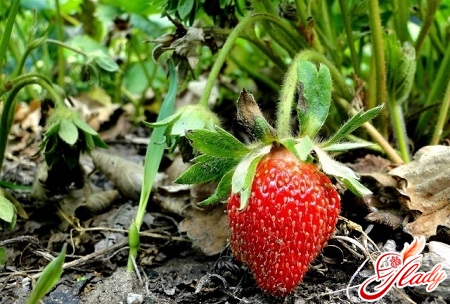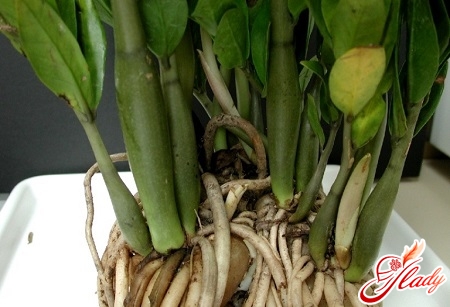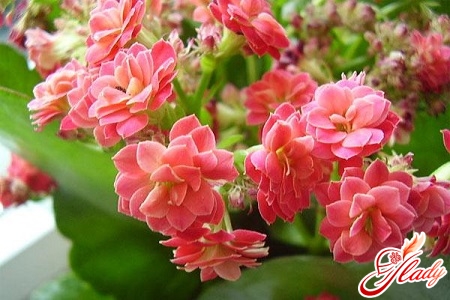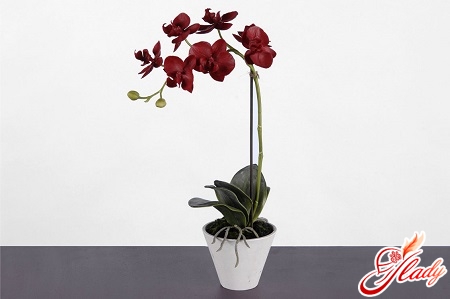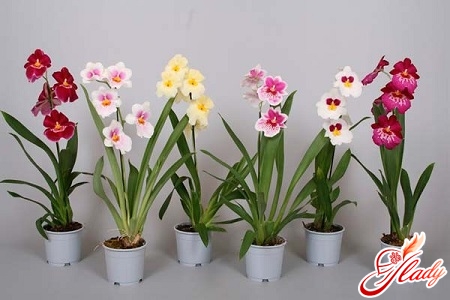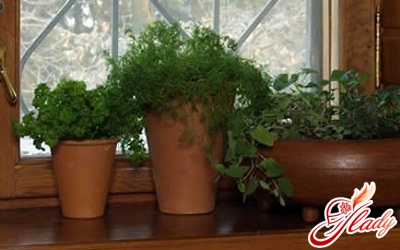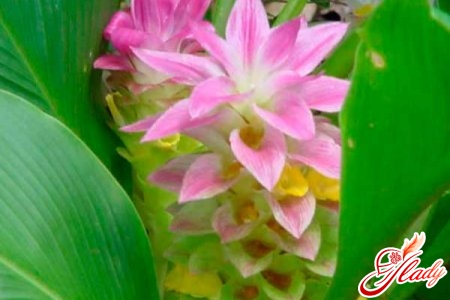 Ginger ale, ginger tea, gingerbread -all this brings to mind something very European (or, on the contrary, very Eastern), very tasty and even to some extent very fabulous. And certainly not about an exotic medicinal plant, a native of southern countries, which resembles bamboo shoots in its appearance and, by the way, blooms very beautifully. Most of us today are familiar with ginger thanks to the fashion for Japanese cuisine and the tradition of serving pieces of pickled ginger with sushi and rolls. Knowing it as a spice, we are not puzzled by the question "ginger: growing or buying". Meanwhile, ginger can easily become a room or garden green pet. It is not only a universal spice and aphrodisiac, but also one of the most ancient medicinal and beautifully flowering plants. Ginger is valued for the amazing properties of the root, similar to the mystical mandrake man. It has an aroma reminiscent of a mixture of mint and lemon and an incomparable burning taste. It is added to sweet and bitter drinks, meat and fish dishes, desserts and pastries. Few people know what the plant itself looks like, since they are used to seeing ginger only in the form of fresh or dried root or aromatic powder. That is why the experimental mood of indoor and summer cottage gardening enthusiasts simply provokes them to grow this exotic plant in a flower pot or in a summer cottage. And as practice shows, it is not difficult to do. With careful care and suitable conditions, ginger can reach a meter in height and even bloom. So, let's get started...
Ginger ale, ginger tea, gingerbread -all this brings to mind something very European (or, on the contrary, very Eastern), very tasty and even to some extent very fabulous. And certainly not about an exotic medicinal plant, a native of southern countries, which resembles bamboo shoots in its appearance and, by the way, blooms very beautifully. Most of us today are familiar with ginger thanks to the fashion for Japanese cuisine and the tradition of serving pieces of pickled ginger with sushi and rolls. Knowing it as a spice, we are not puzzled by the question "ginger: growing or buying". Meanwhile, ginger can easily become a room or garden green pet. It is not only a universal spice and aphrodisiac, but also one of the most ancient medicinal and beautifully flowering plants. Ginger is valued for the amazing properties of the root, similar to the mystical mandrake man. It has an aroma reminiscent of a mixture of mint and lemon and an incomparable burning taste. It is added to sweet and bitter drinks, meat and fish dishes, desserts and pastries. Few people know what the plant itself looks like, since they are used to seeing ginger only in the form of fresh or dried root or aromatic powder. That is why the experimental mood of indoor and summer cottage gardening enthusiasts simply provokes them to grow this exotic plant in a flower pot or in a summer cottage. And as practice shows, it is not difficult to do. With careful care and suitable conditions, ginger can reach a meter in height and even bloom. So, let's get started...
Where to begin?
Ginger is not propagated by seeds, just one simplereason: in nature, it no longer exists in the wild. And when grown industrially, it does not produce full-fledged seeds. And there is no need for this, since ginger is easily propagated by dividing the rhizome. Growing ginger at home should begin with choosing planting material. Its fresh root, which can be purchased in the vegetable department of almost any supermarket, is quite suitable for this. When buying a root specifically for planting, choose a rhizome with a smooth and shiny skin. It should not be too dry or (even worse) frozen, and most importantly, it should have shoot buds (like eyes on a potato). Before planting, it is worth putting the root in warm water (for two or three hours) to awaken the buds to grow. If you are going to plant not the entire root, but only a part of it, then dry the cut or powder it with ash (activated carbon). The pot for this unusual houseplant needs to be wide, as the ginger root system grows in width. Put a drainage layer three or five centimeters thick on the bottom of the pot. Prepare a well-aerated soil mixture: turf soil, leaf humus and sand in equal proportions. And now plant the root, burying it in the ground to a depth of two to three centimeters with the eyes facing up, and then water the newly-made bed generously. If everything is done correctly, then in about two weeks the first young shoots of ginger will appear.
Care for growing ginger
After the green ones emerged from the groundshoots, your task should be to take good and competent care of them. Ginger is a heat-loving and moisture-loving plant. Therefore, the main care comes down to frequent watering and maintaining a warm and humid microclimate near the plant. It is unacceptable to overdry the soil in which ginger grows - this will lead to the inevitable death of the young plant. Water it as needed: often and little by little. After each watering, carefully and shallowly loosen the soil. To maintain air humidity, spray the growing ginger every day (or every other day). Ginger loves light. Therefore, provide it with a sufficient amount of daylight, but protect it from direct sunlight. Like any growing organism, young ginger should be fed. So, for better growth, add mineral and organic (or better yet, complex) fertilizers for indoor flowers to its diet. Here, in general, are all the basic rules for caring for growing ginger.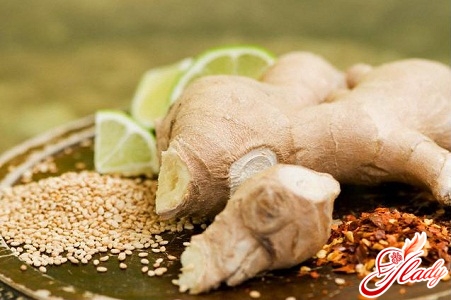
Ginger on the garden bed
To grow ginger in your garden, you need toYou should also first germinate the ginger at home by planting the root in February-March. In spring and summer, it will begin to grow actively. By this time, the ginger should be transplanted into the garden bed. It is clear that for growing in the garden, you can germinate not one root, but several - then several ginger bushes will be green in your garden bed. From the moment of planting until the spicy rhizome is fully ripened, six to ten months should pass, depending on the climate: in warm regions, it will ripen faster. You need to dig up the ginger roots in the fall, after the leaves turn yellow and die. If you are planting ginger for decorative purposes, for the sake of its exotic flowers, then leave the roots to overwinter in the ground. Then the likelihood of ginger flowering in the next season will increase many times over. Caring for the plant in the open ground is also not difficult. It needs to be watered (not allowing the soil to dry out), protected from direct sunlight and sprayed.
Harvesting
Spicy ginger roots are ready to eatfor their intended purpose already three to four months after planting. But by this time they are still quite small, although they have all the taste and aromatic qualities. To get a good harvest, at least eight to ten months are required. Fresh young leaves and stems of ginger are also edible. They can be used for salads at any time, but to get large rhizomes, you should not get carried away with pruning. Fresh ginger roots can be stored in a dry place or in the refrigerator for several months. For longer storage, the rhizomes should be crushed and dried. By the way, dried ginger has a stronger aroma and pungency.
Practical tips
Between growing ginger on a windowsill or ingarden there are no fundamental differences. For the success of this enterprise, you just need to comply with the requirements for growing conditions. Here are some tips from the practice of home "gingerbreading".
As you can see, there are no particular difficulties in growingginger does not. Therefore, if you have a strong experimental spirit or you just want to try growing an exotic plant at home or in your garden, then ginger is quite suitable for the implementation of your plant-growing plans. Having grown this amazing fairy-tale spice with your own hands, you will amuse your vanity, and will make ginger lemonade in the summer and bake Christmas gingerbread in the winter. And you will always have at hand not only a universal remedy for colds, but also an amazing spice that awakens love passion. We recommend reading:




